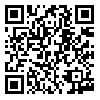BibTeX | RIS | EndNote | Medlars | ProCite | Reference Manager | RefWorks
Send citation to:
URL: http://ijme.tums.ac.ir/article-1-5746-en.html
2- Assistant Professor, Department of History, Isfahan University, Isfahan, Iran.
One major problem that continued to threaten the Iranian society well into early twentieth century was the spread of epidemics and infectious diseases. Even though the Iranian civilization had been around for centuries, deaths resulting from such diseases caused the population to stay at approximately six million. Qajar kings and rulers were the first to attempt to control epidemic diseases by utilizing modern methods such as vaccination.
In 1919, Prince Firuz Mirza Nusrat al-Dawla was elected as head of the Iranian delegation to the Paris Peace Conference. A member of this delegation and the ruler's personal physician was Dr. Mohammad Khan, who introduced Firuz Mirza to the Pasteur Institute upon arriving in Paris. Firuz Mirza was impressed by the activities of the Institute and decided to establish a similar institution in Iran.
Findings of the present study show that the establishment of this institution resulted in measures that, along with other activities initiated by the government in the field of public health, controlled the spread of many infectious diseases in Iran.
Received: 2016/05/2 | Accepted: 2016/07/13 | Published: 2016/08/3
| Rights and permissions | |
 |
This work is licensed under a Creative Commons Attribution-NonCommercial 4.0 International License. |





